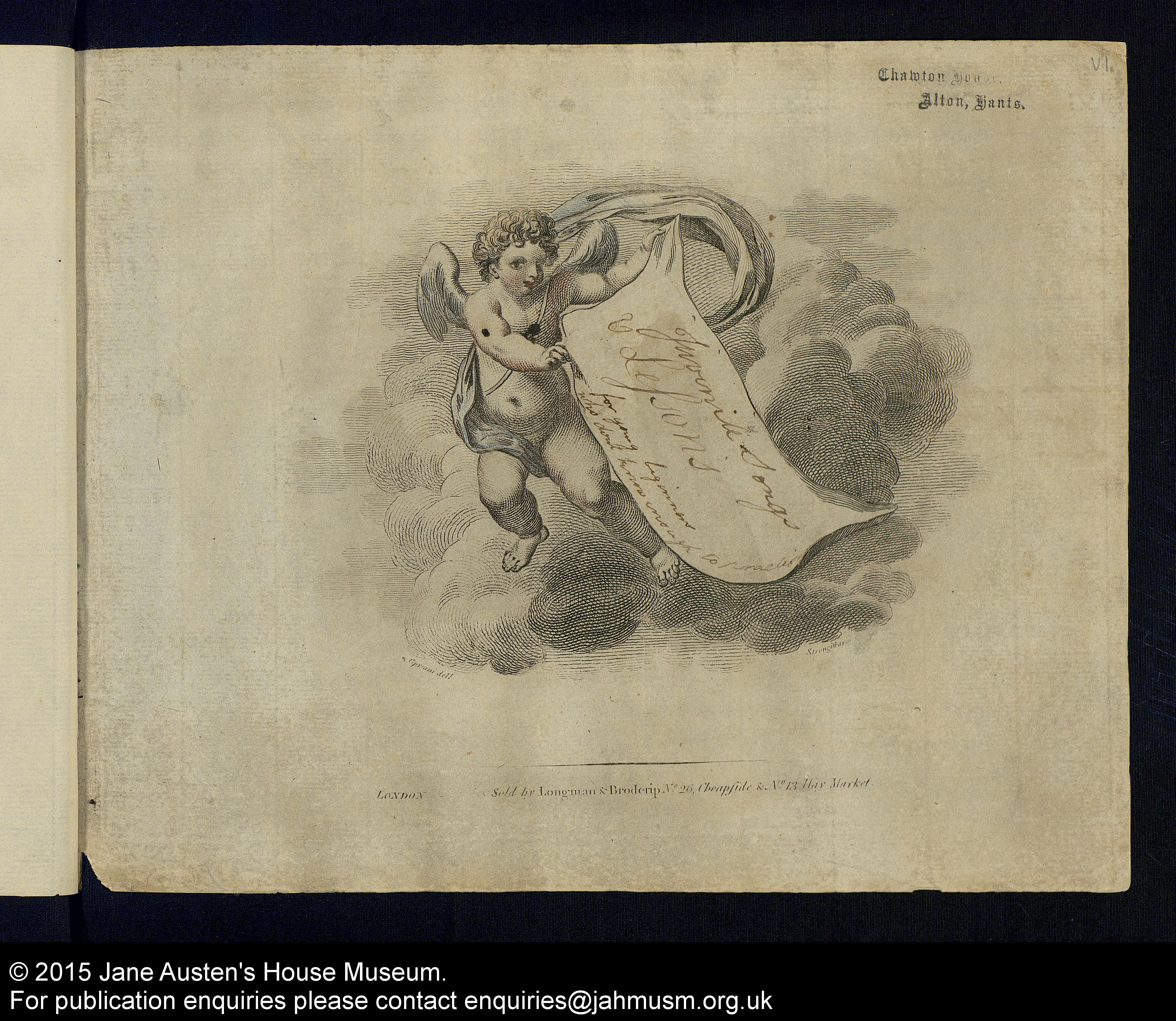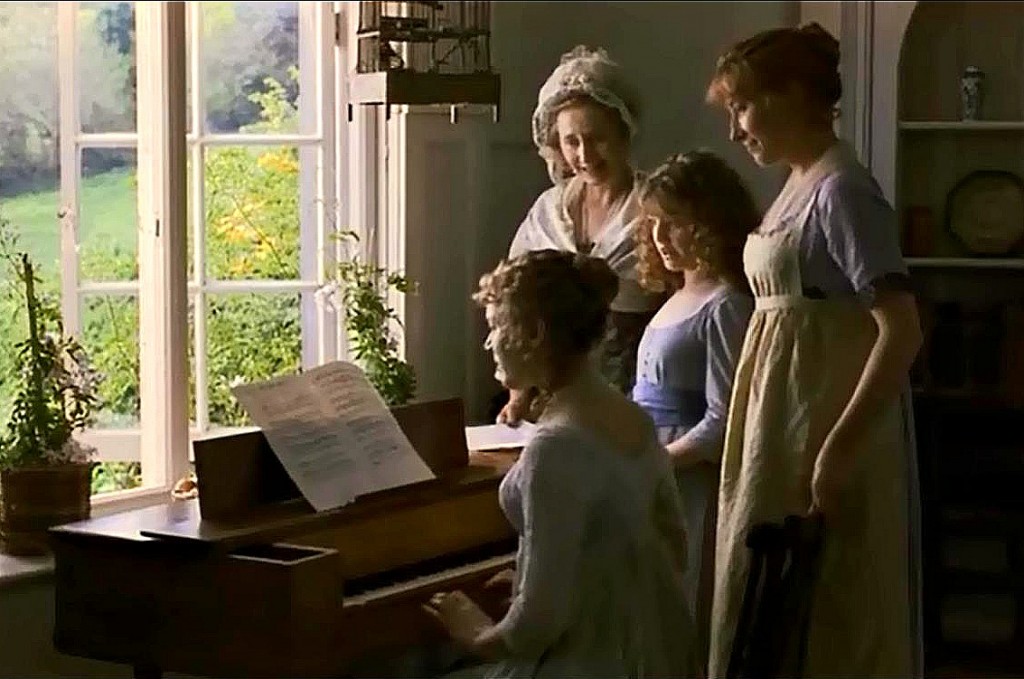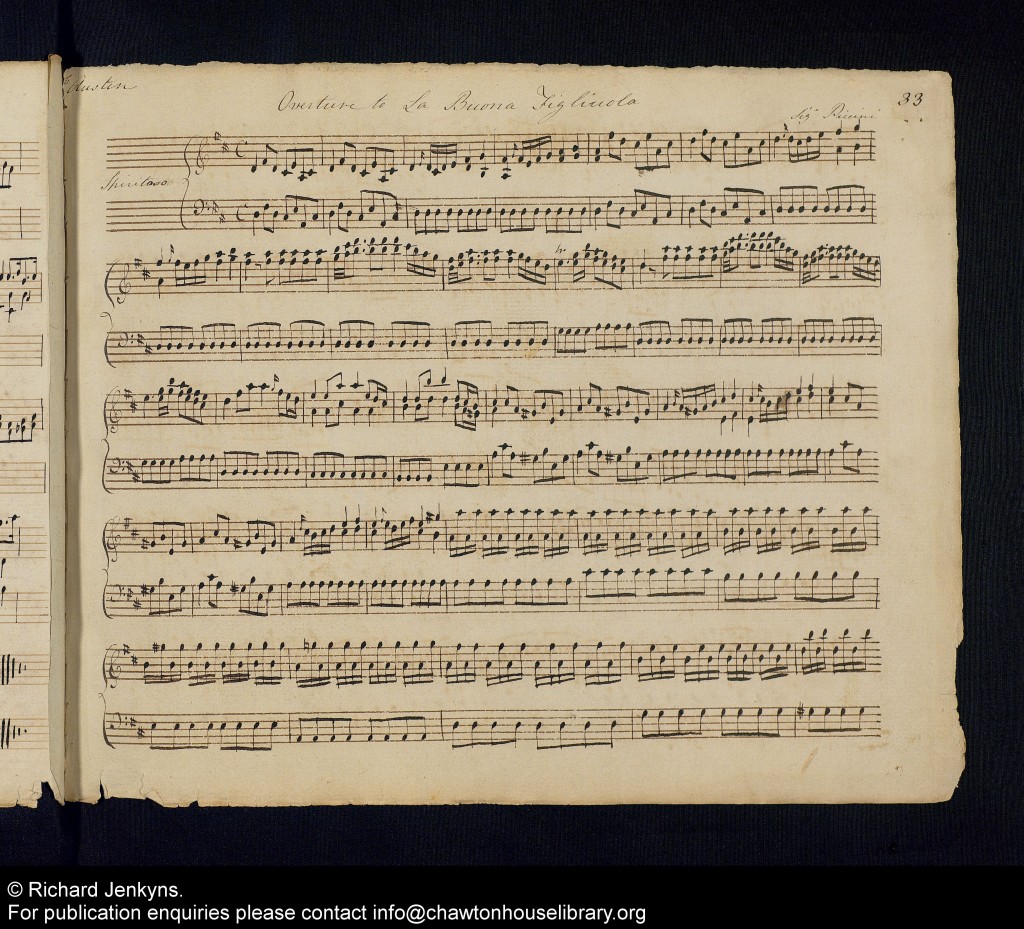Jane Austen’s music online (for free!)
Anyone who has read a Jane Austen novel, or seen one of the many adaptations of her work for film, knows that music plays a significant role. Whether it’s dancing at a ball, playing the piano in the drawing room, or attending a concert, Austen uses musical scenes to stage pivotal moments for her characters: think of the balls in Pride and Prejudice, the musical courtship of Willoughby and Marianne in Sense and Sensibility, the mystery of Jane Fairfax’s piano in Emma, or the assembly room concert in Persuasion.
But what about Austen’s own musical life? What kind of knowledge and experience did she draw on while imagining the musical episodes in her novels?

Luckily, some of Austen’s own music books are still around to help us answer that question. There are also other family music books that survive: albums that belonged to the older generation, which Austen would have known when she was growing up; and volumes belonging to younger family members, who swapped hand-copied music amongst themselves like we do with recordings today.

I first started working on these books more than ten years ago, as part of a bigger project on domestic music making in Britain around 1800. The Austen books were particularly interesting to me as all the other music books I had studied belonged to the super-rich: aristocratic and wealthy land-owning families, whose music books generally survive in imposing country house libraries. The Austens, in contrast, were a relatively modest gentry family, so I thought their music would provide a good comparison to these more affluent, and possibly not very representative, examples.
I started off with the Austen music books that belong today to the Jane Austen’s House Museum in Chawton, which is in the house that Austen lived in from 1809. These books are fairly well known to both music historians and literary scholars, but I thought that comparing them to other collections and studying them in this wider context might yield some new insights. I soon became aware that there were other, much less studied Austen music volumes that remained in a private collection belonging to descendants of the family, and I was able to arrange to see them.

Samantha Carrasco, who finished her Southampton PhD in 2013 (“The Austen Family Music Books and Hampshire Music Culture, 1770-1820”) began to work on these volumes too. In the course of her PhD research, she found two MORE volumes of Austen music that no one was aware had survived. We realised that there were lots of intricate connections between the various albums owned by Austen family members, and mysteries of ownership and attribution to solve. Sam put together several wonderful concerts based on the Austen music, and my colleague David Owen Norris, along with soprano Amanda Pitt, recorded some of the music on the Dutton Epoch label.
Here’s a clip from that recording – Kiallmark’s variations on Robin Adair, the only song mentioned in Austen’s Emma.
All this work was made much more difficult by the physical dispersal of the Austen books in three different locations. It soon became clear that it would be a huge advantage for performers and scholars – as well as for Austen fans – to have all of the Austen music books available online. With the help of our wonderful colleagues in the University of Southampton’s Hartley Library, the books have now all been digitised, and deposited in the digital repository the Internet Archive. The collection is completely free and open to the public.
The Austen Family Music Books collection consists of eighteen music books in total, and almost 600 pieces of music, mainly songs and works for keyboard and harp. The project went live on 16 December (Jane Austen’s birthday!) and has already racked up thousands of views. We are especially happy that we were able to get the books online this year, as 2017 is the Jane Austen bicentenary: now people can use music the Austens actually owned and knew for events they are planning to put on during the celebrations.
This all sounds pretty straightforward, but it definitely was not. The digitisation project took more than five years, and involved transporting priceless manuscripts from their usual homes, commissioning stabilising work on some of the bindings in disrepair, finding ways to discourage illegal use of the images, negotiating licenses, and lots of other stuff in addition to the technical work on the images and the cataloguing. I learned more about things like insurance and licensing than I ever really wanted to know, and at times I thought the whole project would never happen. The support from the Hartley Library was fantastic, though, and it’s really down to them that everything worked out in the end. Julian Ball from the digitisation unit is now one of my heroes, and Karen Robson, Anne-marrie Steel, and Sonia Bradley from the Archives section were brilliant. The owners of the books – the Jane Austen’s House Museum, Professor Richard Jenkyns, and Mr Richard Knight – have been amazingly generous, and we had lots of help from our partners at Chawton House Library at every step of the way. It’s really exciting to see the project finally come to fruition, and I am looking forward to seeing what people do with the music now that it’s freely available for them to use.

